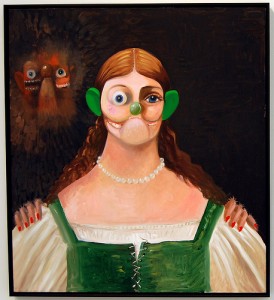Artist Resale Royalties: Do They Help or Hurt?
In America, it’s sometime said, all big trends start in California. That’s true for great things like hot tubs, the iPod, and Pinkberry. It’s also true for bad things, like tax revolts, Pinkberry, and . . . artist resale royalties.
Artist resale royalties? In a previous post, we explained how California’s law guaranteeing artists 5 percent of the profits from any later sale of their artwork has some unintended consequences. The California law helps the tiny fraction of artists fortunate enough to have their work appreciate significantly in value. But it does nothing for the 99% of artists whose work has little enduring commercial value. Not only does it not help them, it probably hurts them.
How? Because if buyers know that they have to pay the artist a share of any profits from later sales, they are likely to pay less in the initial transaction. (Note that artists don’t have to pay buyers when buyers lose money in a subsequent resale, so this is not a risk-sharing rule: it simply shares profits.) Because most artists will never see any resale royalties, they are likely to be worse off overall.
In other words, the right to 5 percent of a later sale is like a lottery ticket — and like lottery tickets, the vast majority of ticket holders walk away worse off. And the net effect is to transfer wealth from unsuccessful artists (the lottery losers) to successful artists (the lottery winners).
And now the N.Y. Times reports that Congress may be set to impose the California resale royalty rule on the rest of the nation. A bill, introduced by Representative Jerrold Nadler (D-NY) and Senator Herb Kohl (D-WI), imposes a resale royalty of 7 percent on all sales of artwork at auction houses that fetch over $10,000. Half of the money would go to the artist, and half to non-profit art museums.
So far artists do not appear to be protesting this proposal. We can think of three reasons why this might be the case. First, maybe unsuccessful and unknown artists are not a very organized bunch, and so there is no group or PAC (“Unsung Artists of America”?) ready to lobby against this wrong-headed idea.
Alternatively, maybe we are wrong, and major buyers pay no attention to the possibility that they may have to later share their profits with artists. We are skeptical of this. And if it were true, we would expect to see little change in Californian art markets as opposed to the rest of the nation. This is ultimately an empirical question, but there is at least anecdotal evidence that art auction activity dropped in the wake of the passage of the California rule, as auctions moved to states, like New York, with no such levy on later profits.
Finally, it may be that artists, like most people, are irrationally optimistic. As a large body of research in psychology and economics has shown, many people exhibit a marked “optimism bias.” They discount the possibility that they will (fail; divorce; die in a car crash) and assume that the success is far more likely than it actually is.
Optimism bias is well-established in many settings, and there is evidence that the same is true for artists. Indeed, two studies conducted by one of us (Sprigman) and Christopher Buccafusco of the Chicago-Kent College of Law showed that creative artists value their work far higher than do potential buyers. In the first, several hundred subjects were given the opportunity to buy and sell chances to win a haiku-writing contest. The subjects were randomly assigned to be Authors or Bidders. Authors were told that they would be competing against nine other haiku writers to win $50. Each Author’s poem was assigned to a Bidder who wrote down the amount he would be willing to pay. Similarly, each Author wrote down the amount she would be willing to accept.
The experiment revealed a significant gap in valuations. On average, Authors were willing to sell their chance of winning the haiku contest for $22.90. But Bidders’ average willingness to pay was only $10.38. These results are consistent with the hundreds of other studies that have confirmed optimism bias in a wide variety of settings. Authors believed that they were roughly 30% likely to win a contest where in reality they had, on average, a 10% chance. They were irrationally optimistic.
The results of the haiku study were replicated in a study that focused on would-be professional artists – painting students from the School of the Art Institute in Chicago. The structure was the same, but this time the prize was $100. The Painters demanded on average nearly $75, while the Bidders were willing to pay less than $18.
If these findings are accurate, they go along way toward explaining the existence of the California rule, and the lack of opposition to the Nadler-Kohl proposal. As the old New York Lotto slogan put it, “You gotta be in it to win it!”


Comments